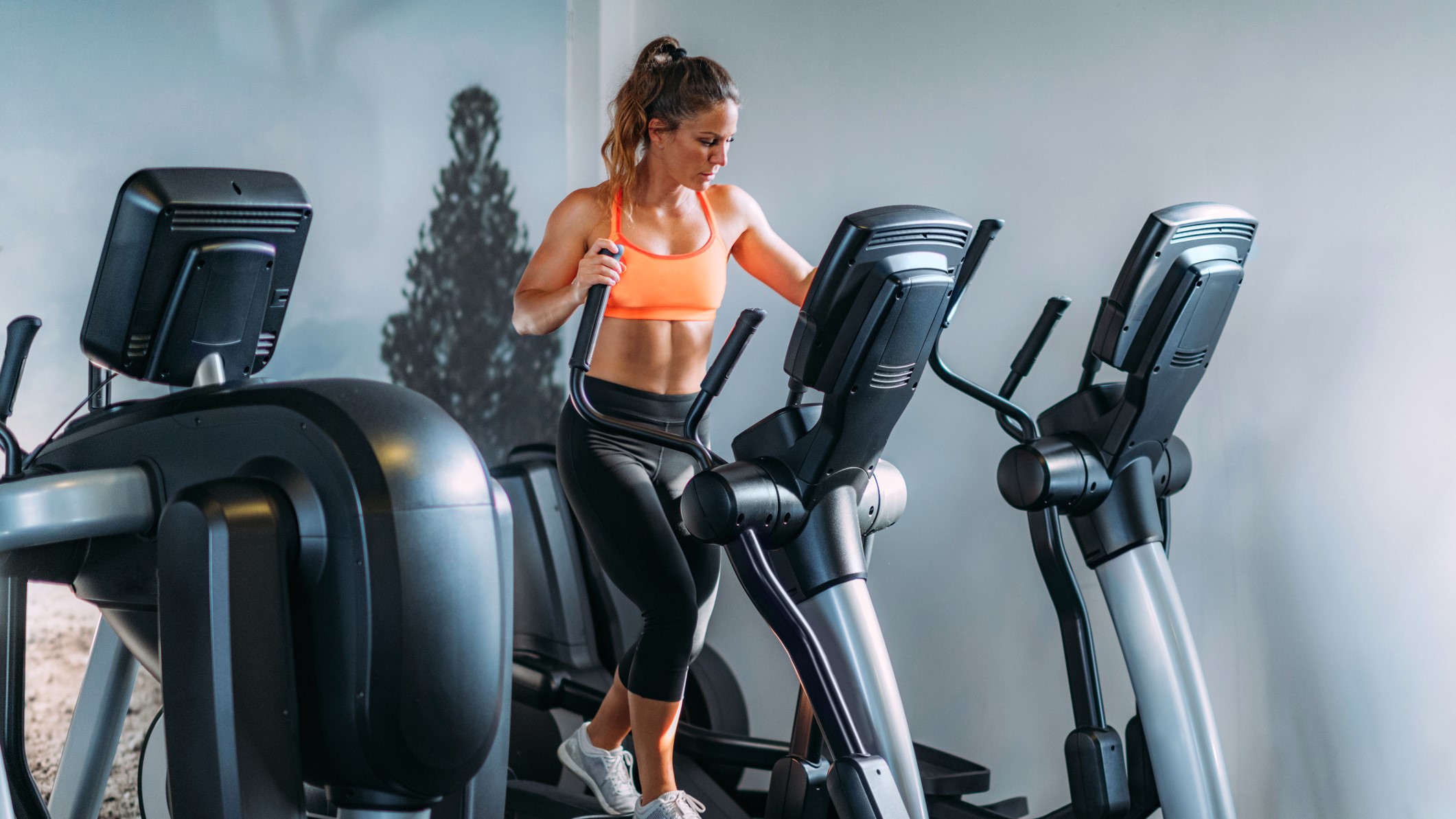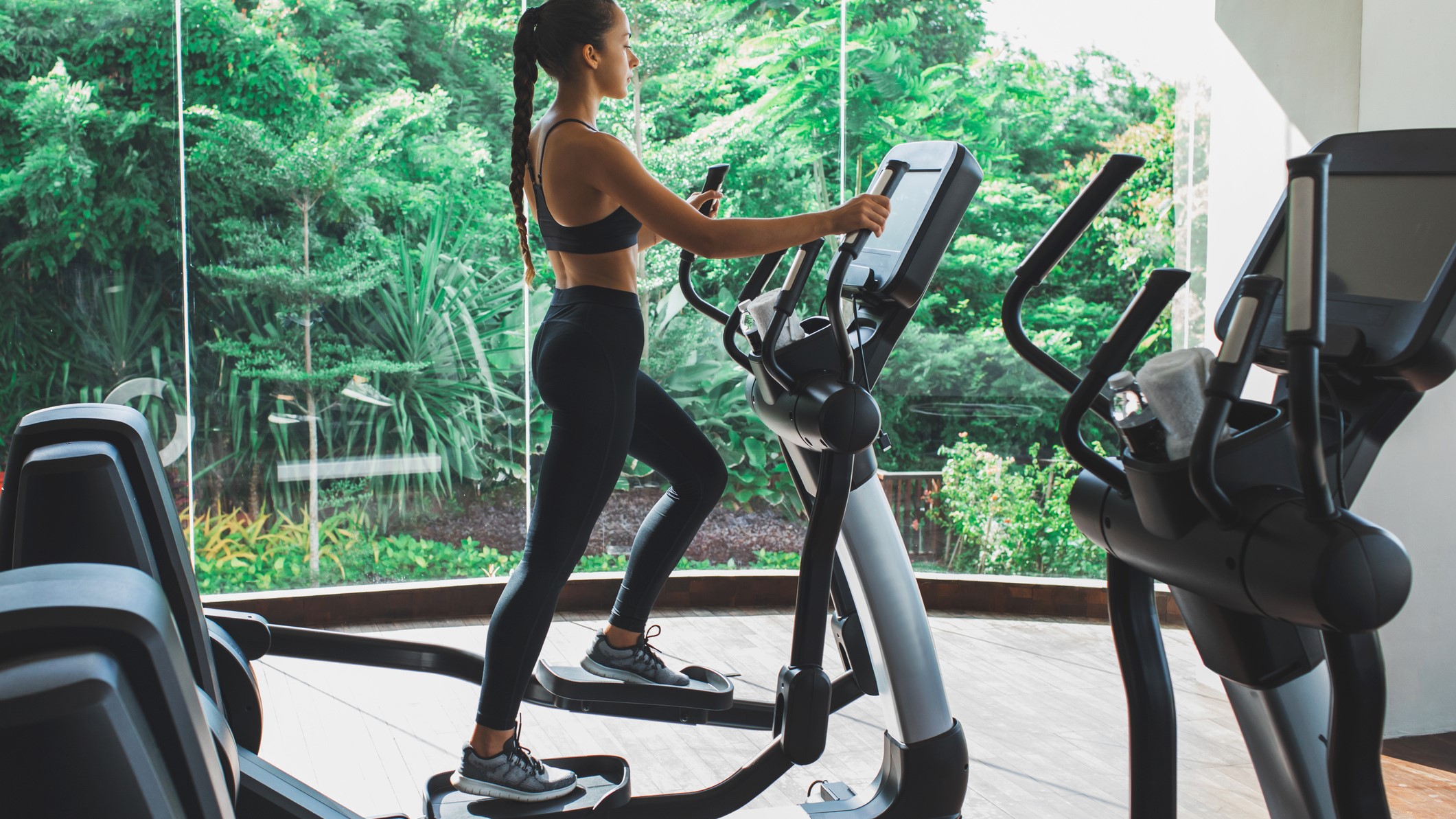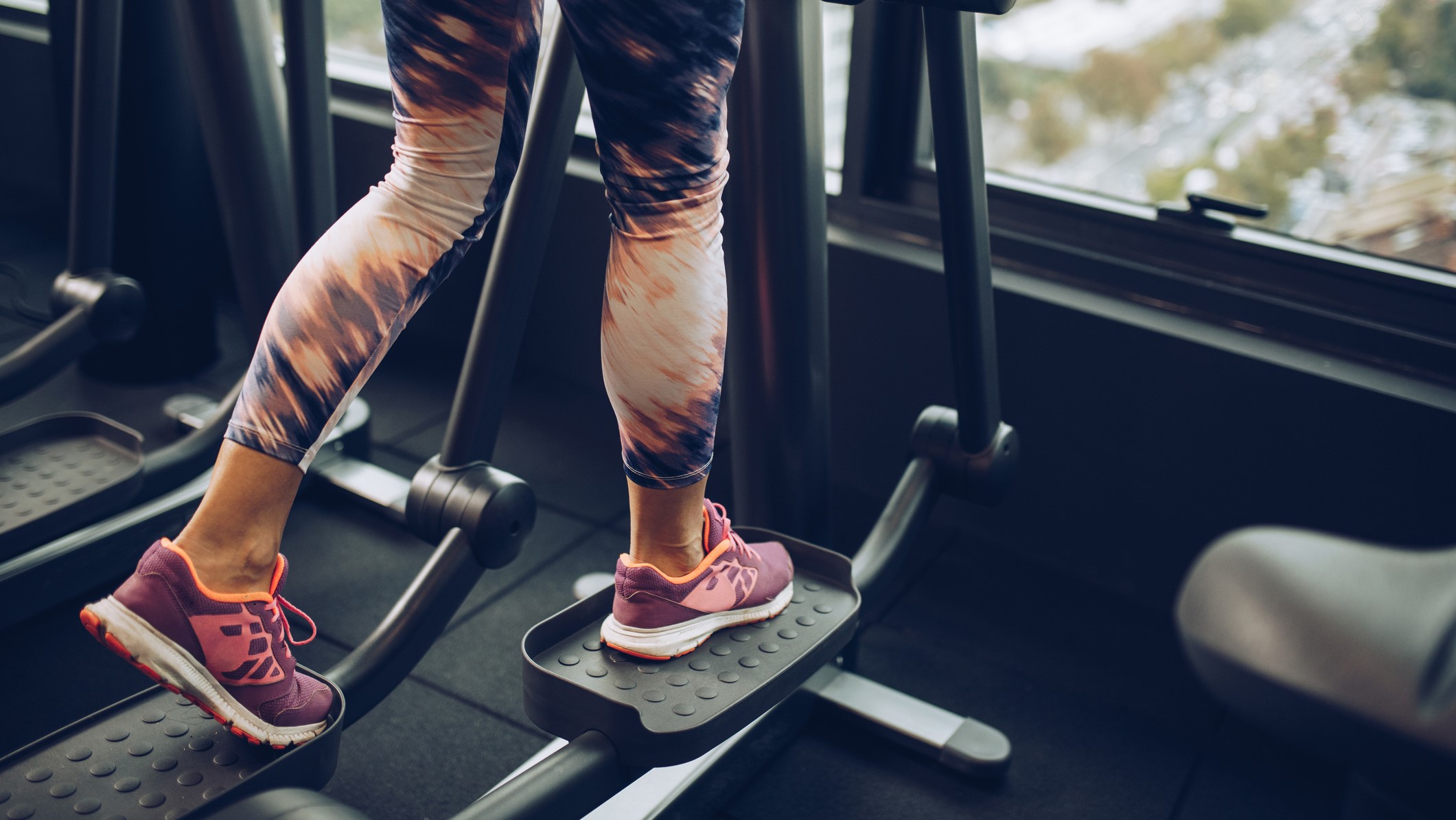
Whether you’ve re-joined your local gym, or you’re looking for new ways to mix up your cardio, you might be wondering what the benefits are of jumping on the elliptical machine. Sometimes known as cross-trainers, these stationary exercise machines work your upper and lower body, without putting excessive pressure on the joints. Read on to find out more about the benefits of using an elliptical, and whether or not they are a good choice when it comes to reaching your weight loss goals.
The elliptical will help to work out a wide range of muscles. To find out more, we spoke with Physical Therapist Mari Carmen, Founder of Fit Mama Powered By Mari Carmen Fitness App, to find out exactly what 30 minutes on an elliptical does to your body.
What muscles do you work on an elliptical?
Because of how you exercise on an elliptical machine, you can get both an upper and lower body workout in one. An elliptical machine is great for working all of the muscles in the body — the glutes, hamstrings, quads, chest, back, biceps, triceps, and core muscles explains Carmen.
A study from the National Library of Medicine in the UK found that the elliptical does a great job of working the back extensors, the shoulders, and the internal oblique muscles. At the same time, the machine works the hamstrings, glutes, calves, pectorals, and, although not as much, the biceps, triceps, and forearms.
Is an elliptical good for weight loss?

A 2021 Harvard study showed that a 30-minute elliptical workout may burn 278 to 350 calories, depending on your body weight, the resistance level of the machine, and how hard you push yourself. If you’re exercising to lose weight, adding a 30-minute elliptical session to the start or end of your strength workout could help increase your overall calorie burn.
Carmen adds that “like with any workout, to achieve weight loss it’s all based on a calorie deficit. If you are using the elliptical machine to increase your daily calorie expenditure, it’s great for burning calories in a short period. To achieve weight loss, however, you need to burn more calories than you consume in a day.”
A study found that while both high and medium-intensity workouts helped with fat loss, high-intensity intervals allow you to burn much more in a shorter amount of time. So, consider adding an elliptical workout to your overall sessions if you’re aiming to lose weight.

What can 30 minutes on an elliptical do to your body?
Increase your heart rate and burn calories
As we mentioned, an elliptical workout burns calories relatively quickly. Although, as mentioned above, like running and swimming, or any form of workout, you need to be in a calorie deficit to lose weight. If you are looking to keep a closer eye on your overall calorie expenditure, investing in one of the best fitness trackers can help.
It works most of the major muscle groups in the body
As the elliptical machine has handles, it gives you an upper and lower body workout at the same time, especially compared to walking on the treadmill. Make sure you distribute your weight evenly across the machine and work your upper body at the same pace as your lower body to get the maximum benefits.

Helps with balance
On the elliptical machine, your core muscles have to work hard to keep your body stable, and as you move on the machine, you are distributing your weight, shifting slightly from side to side during strides. Because of this, you will need to think about engaging your core, sucking your belly button into your spine as you move — this, in turn, works on the deep stabilizing muscles in your midsection, which can improve your balance.
It boosts stamina
The elliptical machine allows you to get a solid aerobic workout. As a result, over time, you’ll find that your stamina and endurance improve from using the machine. The elliptical machine allows you to choose between low-intensity, steady workouts, and high-intensity sessions — to up the intensity, simply increase the resistance, or perform more of a HIIT workout, moving faster for a few minutes, then slower for a minute recovery.
Alternatively, incorporate a 30-minute elliptical session into your cardio routine. In general, you should aim for a minimum of 150 minutes of cardiovascular exercise each week, with a maximum of around 300 minutes. This means you should be doing 30 minutes of moderate-intensity exercise five days a week to hit the goal, making a 30-minute elliptical exercise a perfect choice.
Who should avoid using an elliptical?
You may think that if you’re recovering from an injury you have to avoid working out altogether, but an elliptical can be a great way to help you build back your fitness and muscle mass. The machine puts a lot less strain on your body than running and can help you regain strength and motion as you ease back into your regular routine.
Another study published in the Journal of Strength and Conditioning Research showed that the elliptical had a 60% reduction in muscular effort compared with a treadmill, making it a good cardiovascular exercise for those with injuries.
Having said that, if you are suffering from an intense injury and have had problems with your joints, you should consult a doctor or personal trainer before engaging in elliptical workouts.
Tips for the elliptical
Carmen shared some of her top tips for using the elliptical so that you can get as much as possible out of your workouts:
- Be sure to stand up straight to minimize muscle strain.
- Don’t lean on the handles — most ellipticals have two sets of handles. The outer handles move in time with the machine and a stationary set of handles near the machine's controls. Leaning on the handles will impact the amount of calories burned and can also cause muscle tightness.
- Don’t stand on your toes — putting all of your weight onto the balls of your feet can cause strain to the knees. Ellipticals are designed to mimic the natural movement of a run, and when on the machine you should try to move your feet in the same way as you would running for your weight to be evenly distributed across the feet.







